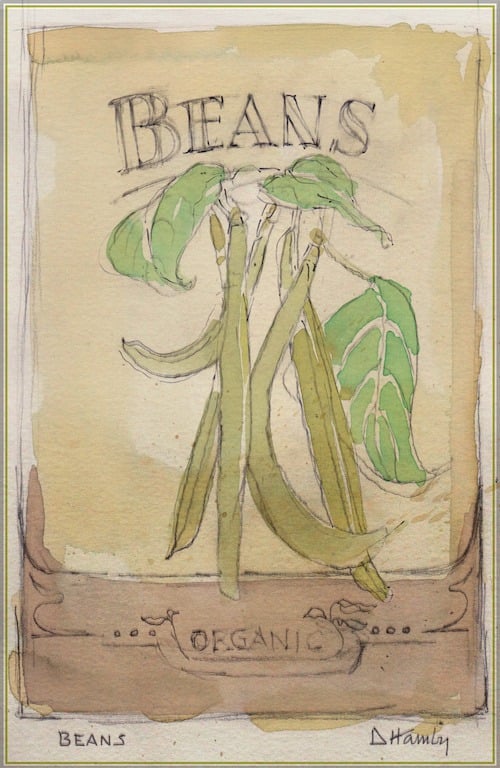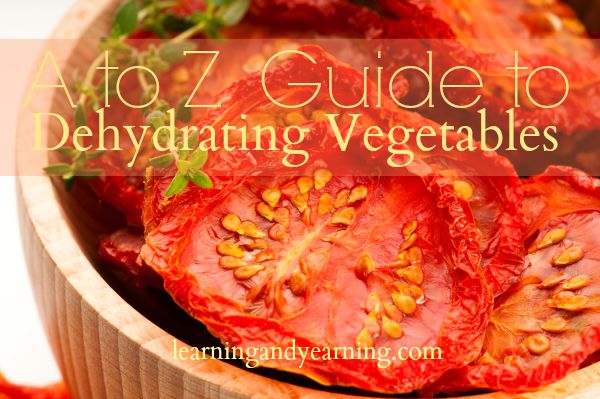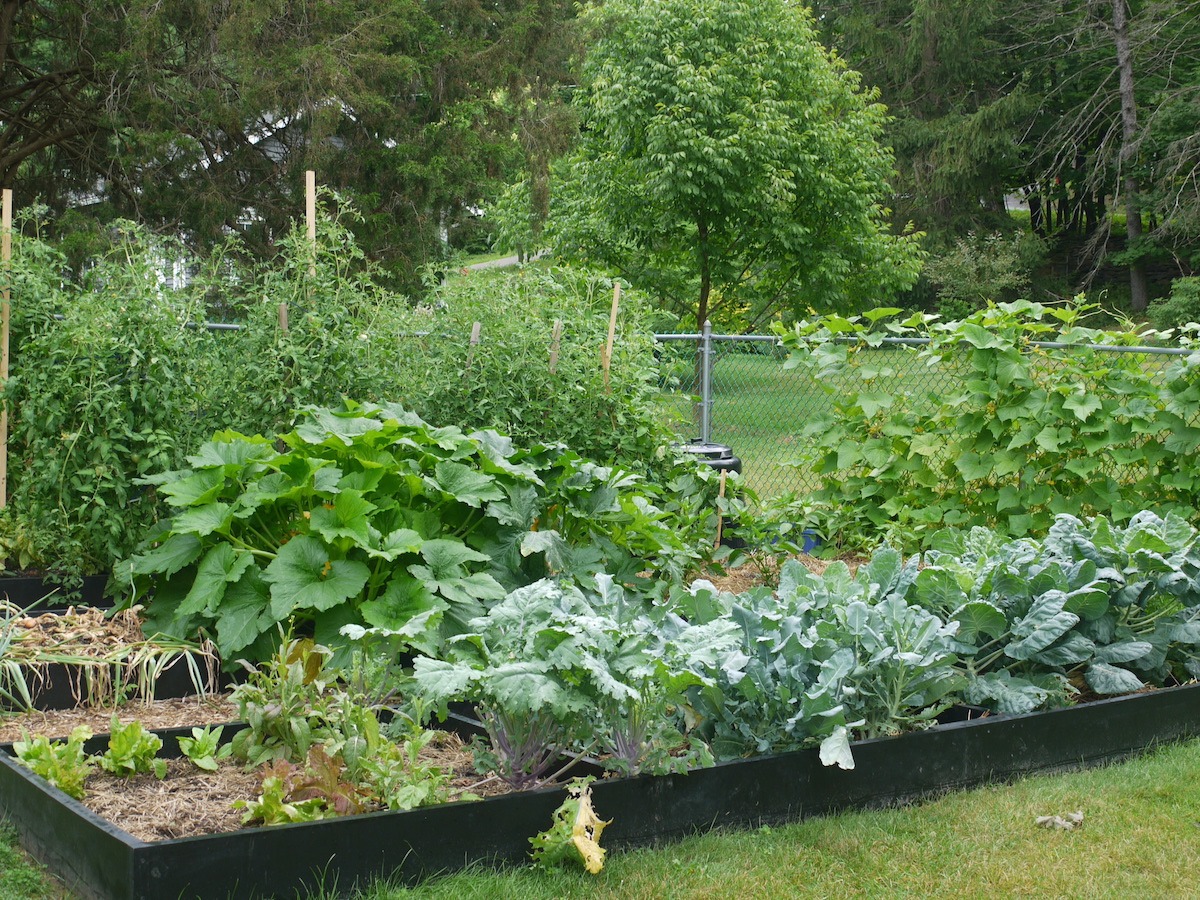
This A to Z guide includes growing information for warm season vegetables: green beans, cucumbers, eggplant, okra, peppers, summer and winter squash, tomatoes, and watermelon.
Continue ReadingA natural living site where you'll learn about organic gardening, foraging, home medicine and more.
by

This A to Z guide includes growing information for warm season vegetables: green beans, cucumbers, eggplant, okra, peppers, summer and winter squash, tomatoes, and watermelon.
Continue Readingby
Are you planning a vegetable garden this year? One of your priorities should be to choose a sunny location for your garden. But that can be a challenge, especially if your property is small or wooded. Don’t give up, though, if you find yourself in this predicament because there are a number of vegetables that grow in shade, especially light or partial shade.
Continue Readingby

There’s so much to love about dehydrating vegetables. Once dehydrated, they take very little room to store. Nutrients aren’t destroyed as they are with canning. If the electricity goes out for an extended time, nothing is spoiled. And dehydrated vegetables can store for years.Continue Reading
by
When you think of preserving the harvest, what comes to mind? I’m sure you thought of canning, freezing, and dehydrating. Have you ever wondered how our ancestors preserved food before the days of modern refrigeration?
Canning has only been around for about 200 years. What did they do before that? One method used was to preserve vegetables through lacto-fermentation in stoneware crocks. Continue Reading
by
I have been fermenting vegetables in a beautiful, old crock with success. The problem is, having only one vessel, I can only ferment one vegetable at a time. Canning jars are an option, but both the crock and the canning jars are less than ideal in terms of letting air in, as gases escape.
by
The past three years or so have seen dramatic changes in the food we eat. I have been gardening since I’m 16, so vegetables have always been a staple. We have alway purchased whole grain bread and have even ground our own whole wheat flour at times. We purchased raw milk from a neighbor in our early married years. I was a sugar addict as a child, but I got that out of my system a long time ago and rarely, if ever, crave sugar. But we have taken our food purchases and preparations to a new level more recently.
It began with meat after seeing the documentary Food, Inc. I guess I was asleep but I really did not understand the extent to which our farming system had changed. The factory model has been applied to how animals are raised to the detriment of both animals and the people who eat those animals. How an animal is raised and what it is fed determines not just how nutritious it is, but whether it is nutritious at all. Animals raised on pasture have meat that is chemically different than animals raised in CAFO’s (Concentrated Animal Feeding Operations). Some of the benefits of eating pasture raised meat may be found here. We now buy all of our meat and eggs exclusively from farms that we have visited to assure that the animals are raised in a healthy manner.
More recently, I have come to realize that for my body to be nourished, it has to be able to digest the food. Sounds like a “no duh”, but much of what we eat is not so easy to digest. Seeds, nuts and grains need sprouting or soaking for our bodies to get the most out of them. I have had food intolerances for years. Guess which foods bother me the most? In addition to dairy, it’s seeds, nuts and grains. Nourishing Traditions is my go to book for info on properly preparing these hard to digest foods.
We lived in the country for only a year in our early marriage, and so it was only a year that we were able to enjoy farm fresh raw milk from our neighbor. We have begun to again find sources for raw milk and cheese, and make our own yogurt. As long as I enjoy in moderation, I’m able to eat these foods that bothered me for so many years. Enzymes that are destroyed in pasteurization enable me to digest it more properly.
During gardening season, we enjoy lots of fresh fruits and vegetables. And yes, we purchase fresh during the winter, too. But, we now also rely on lacto-fermentation to preserve and increase the nutrients of many of the vegetables we eat. This is how our ancestors, and traditional societies preserved food without canning or freezing. Lacto-fermentation not only preserves our garden produce, but it is full of beneficial bacteria which help to keep our guts healthy. The Weston A. Price Foundation has more information here. We’ve also invested in a juicer and have increased our vegetable intake through juicing. On my wish list is a dehydrator for preserving fruits and vegetables, but for now I have used my oven to dry tomatoes if the sun is not shining.
I have far to go and so much to learn but I am loving the journey! And I love that the world that our Creator gave us is more respected when we eat this way. What I try to do, most of all, is purchase single ingredients and make as much as I can from scratch. It’s not so difficult these days with conveniences like bread machines and food processors. I’d love to hear about your journey, big or small. And, please give me advice on ways that I can move forward.
Disclaimer: I am an Amazon affiliate and I do earn a small tiny percentage of purchases made when you click through to Amazon from my blog. Every little bit helps me to move forward in my blogging journey. Maybe I’ll even be able to get that dehydrator one of these days!
by

When I was 8 years old, a neighbor gave me a johnny-jump up flower to plant. I dug a hole and planted it alongside our house, watered it, weeded it, and marveled at it. When it “died”, I pulled it out and was scolded by my neighbor/mentor. You see, if I had left it alone, it would have re-seeded and returned next year.
I thought I was taking care of things, but that was my first gardening mistake. I’ve made many. I’ve put together some info here for beginning gardeners so that, perhaps, you’ll make a few less than I.
Continue Readingby
I like vegetables. A lot. I had stocked up on butternut squash from a local farmer this past fall, so when I saw this recipe, I was anxious to give it a try. I found it in a Wegman’s magazine. It was simple to make and delicious!!
Here’s the recipe:
Preheat oven to 350 degrees. Combine squash and onions in large shallow pan; drizzle with oil. Season to taste with sea salt and pepper; toss lightly. Roast 55 minutes, until tender and brown. Add spinach, which will wilt, and dried cranberries; toss.
Enjoy!! I sure did.